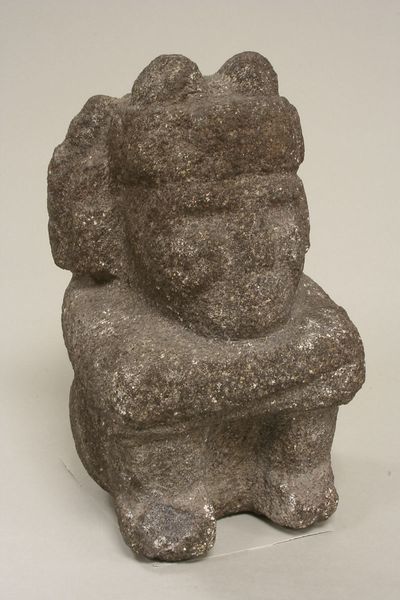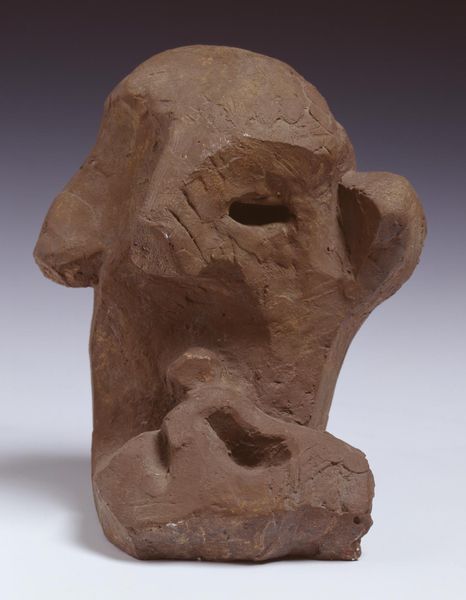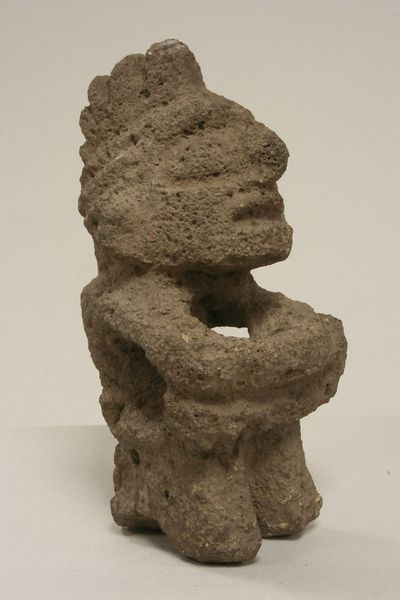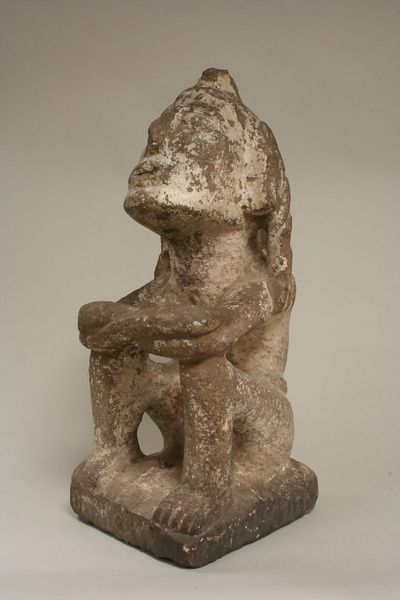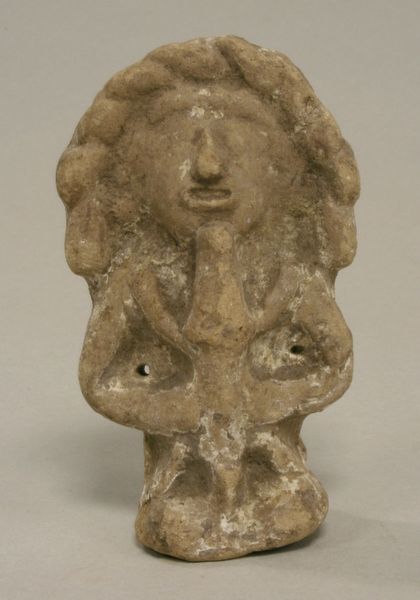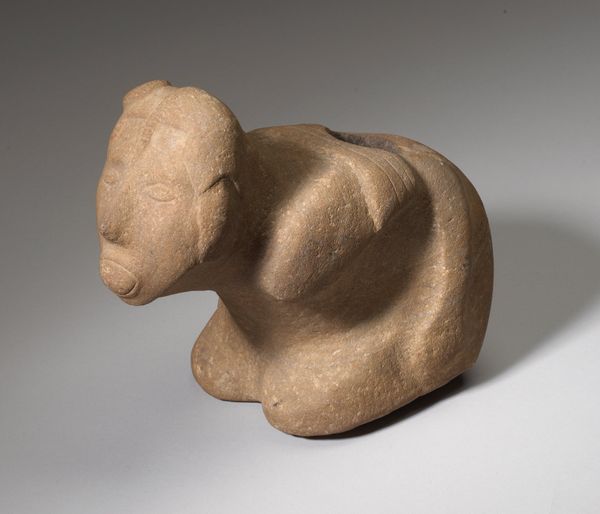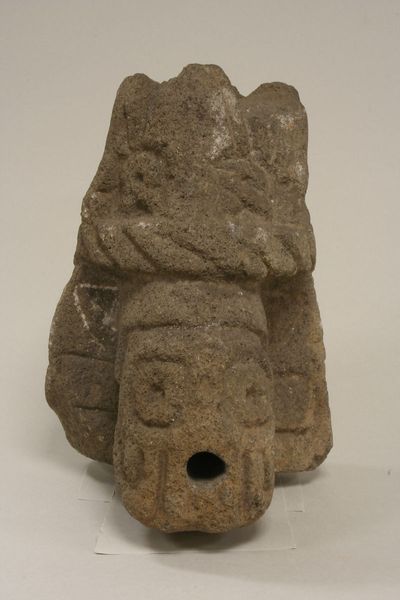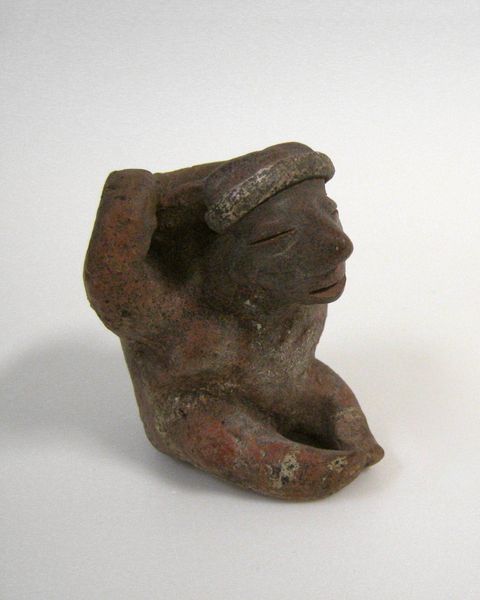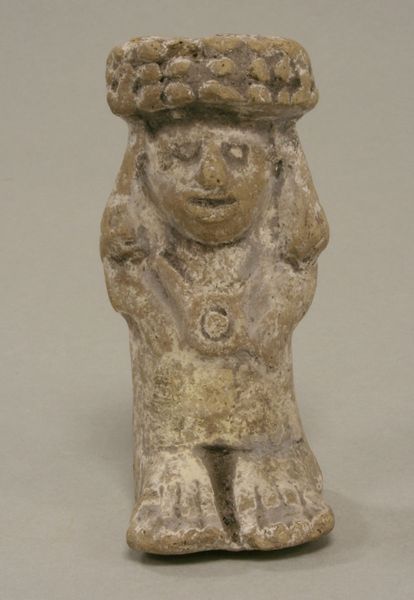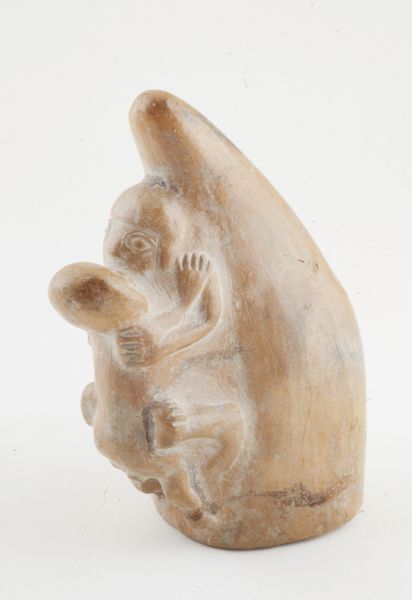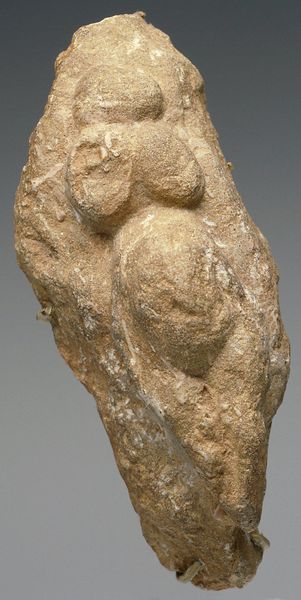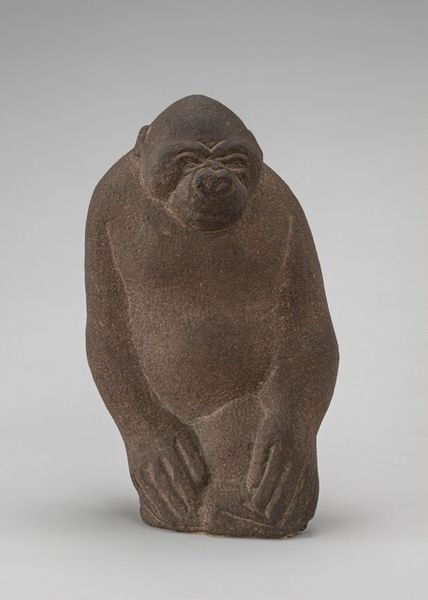
carving, sculpture
#
carving
#
sculpture
#
figuration
#
sculpture
#
indigenous-americas
Copyright: Public domain
This sculpture of Ehecatl, the Aztec god of wind, was carved from reddish brown volcanic stone, sometime between 1300 and 1521. Notice how the sculptor coaxed form from a single block of stone. The granular texture and weight of the stone give the figure a sense of groundedness and permanence. The making of this sculpture would have required considerable physical effort. Stone carving in Aztec society was a skilled practice, often associated with religious or ceremonial contexts. The sculptor likely employed tools made of harder stones, such as obsidian, to chip away at the volcanic rock, gradually revealing the deity within. The sculpture provides insight into Aztec beliefs and worldview. The choice of volcanic stone connects the deity with the earth and its elemental forces. Appreciating the material and the making process allows us to understand its original cultural significance. It also challenges any separation between art, craft and indigenous practice.
Comments
No comments
Be the first to comment and join the conversation on the ultimate creative platform.
